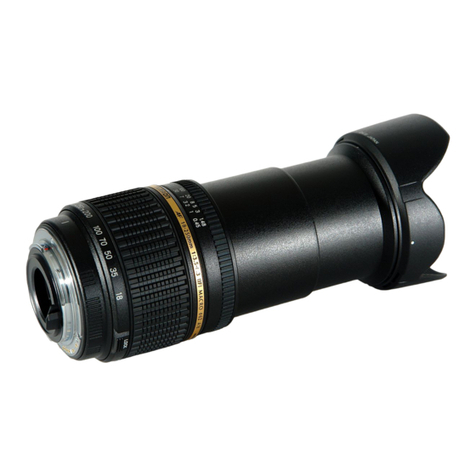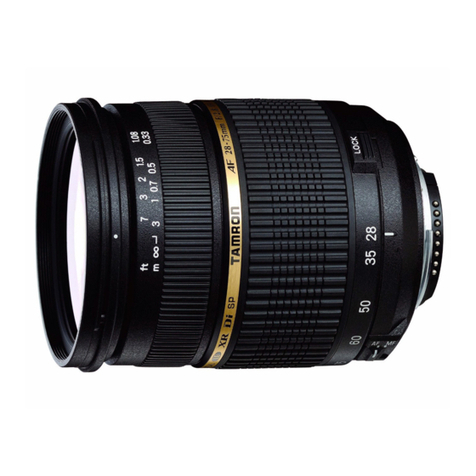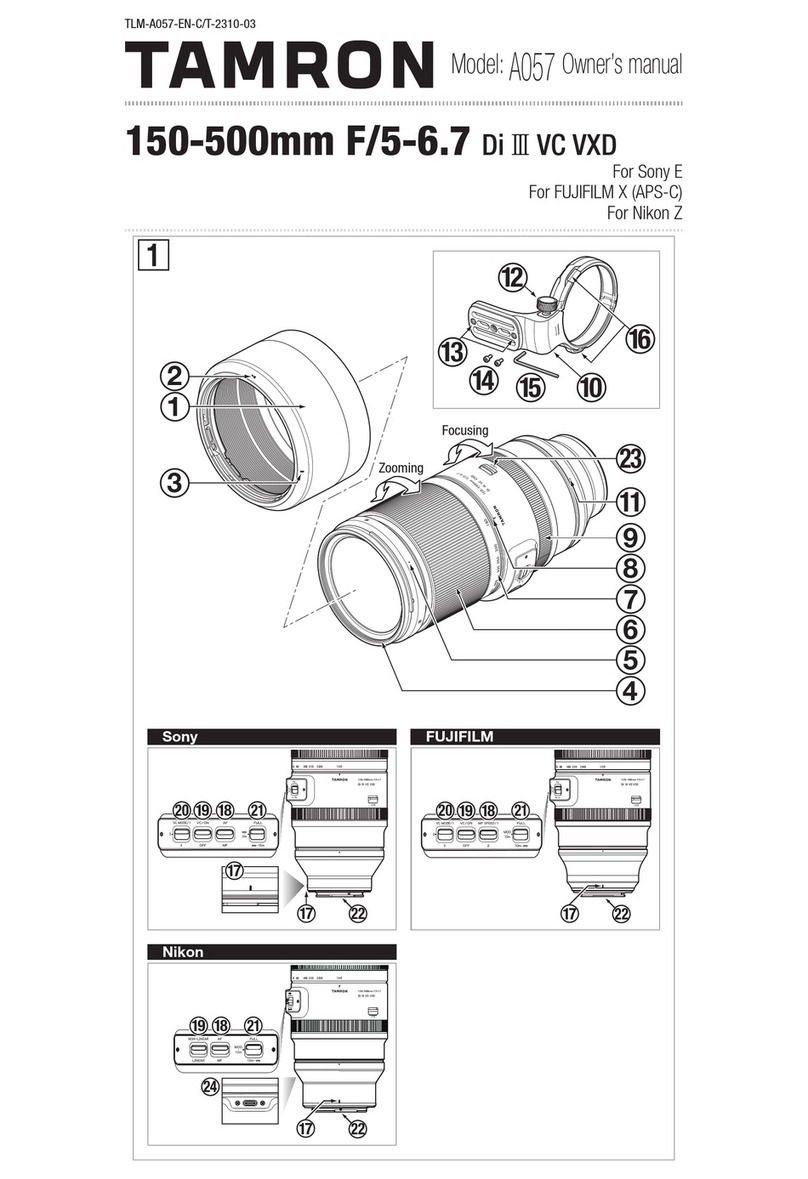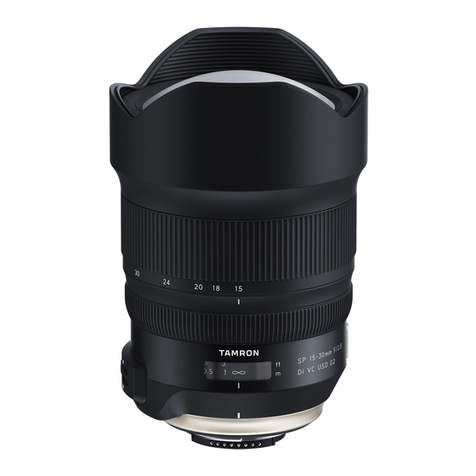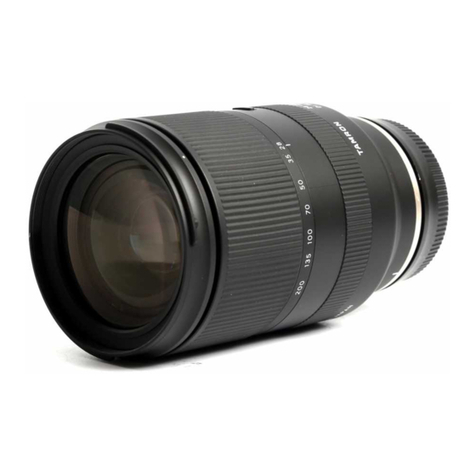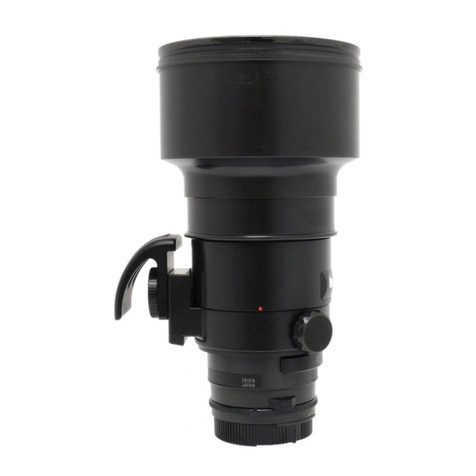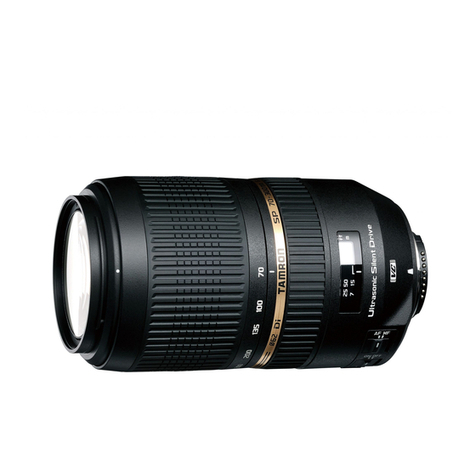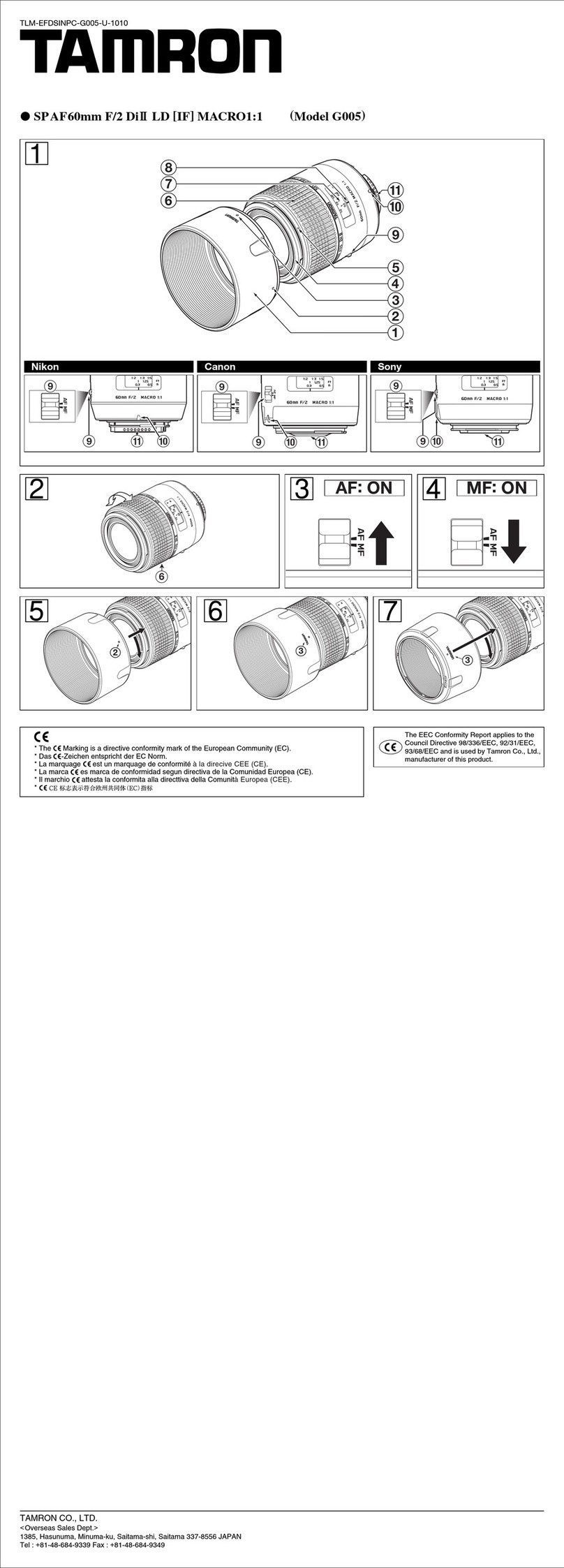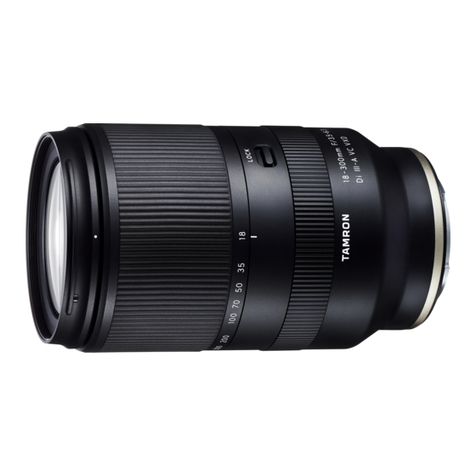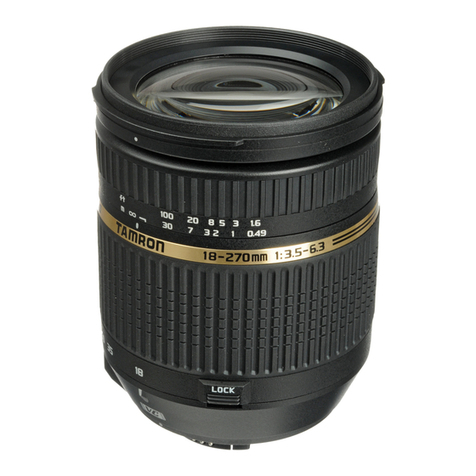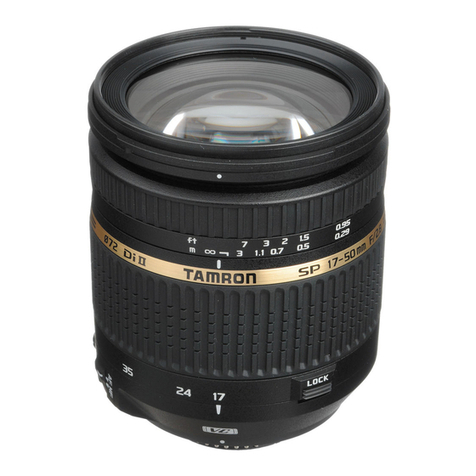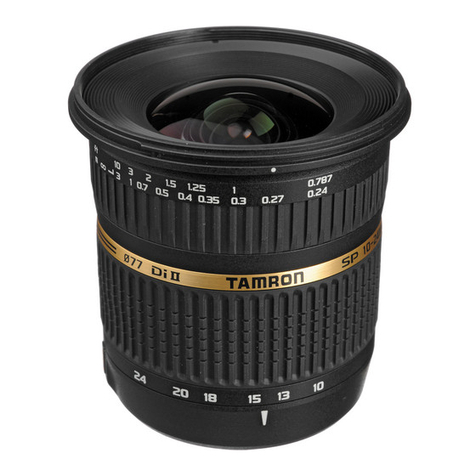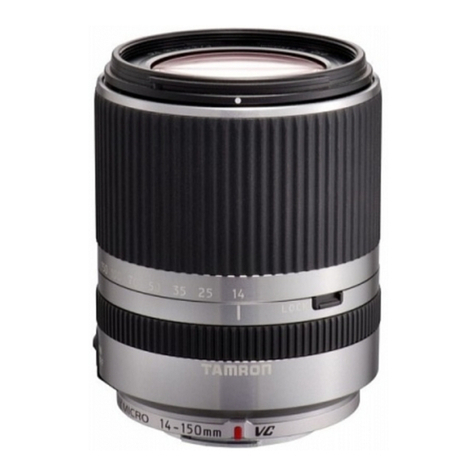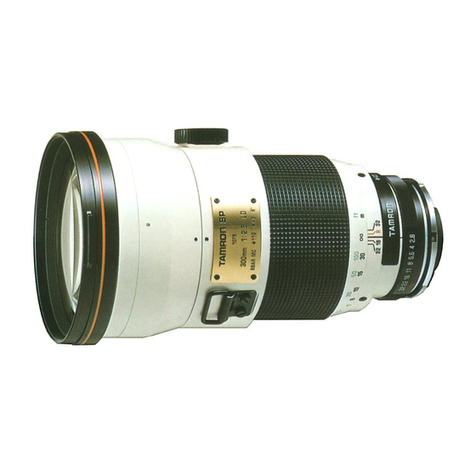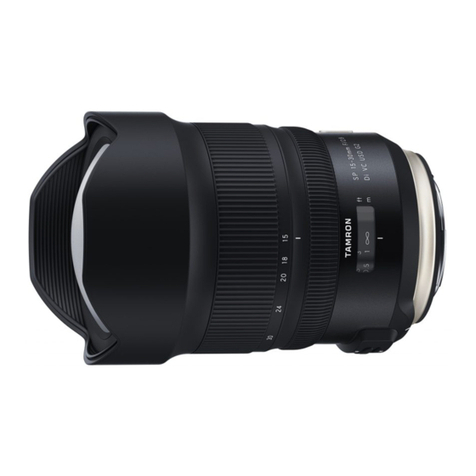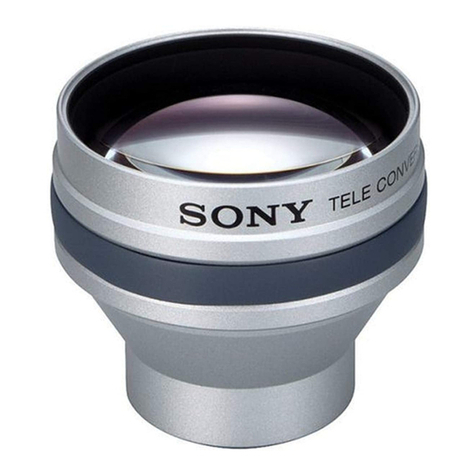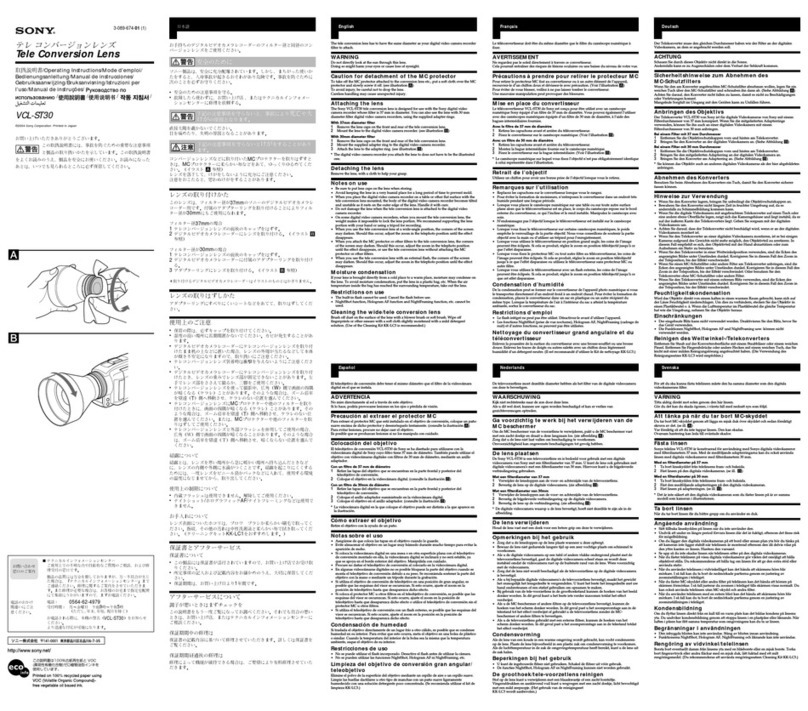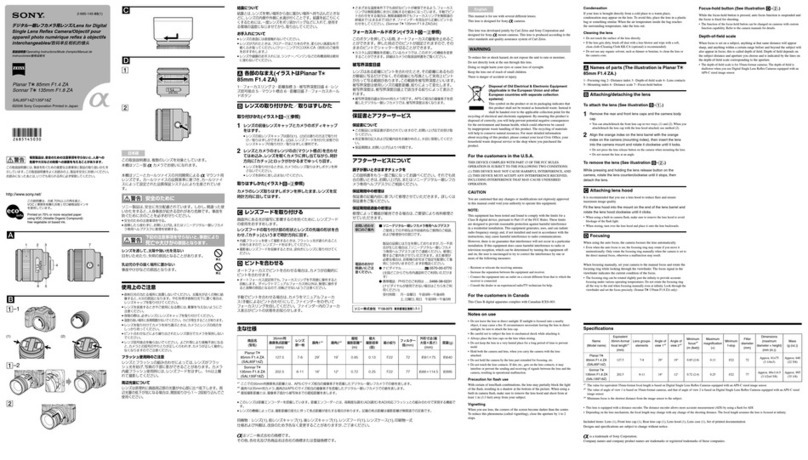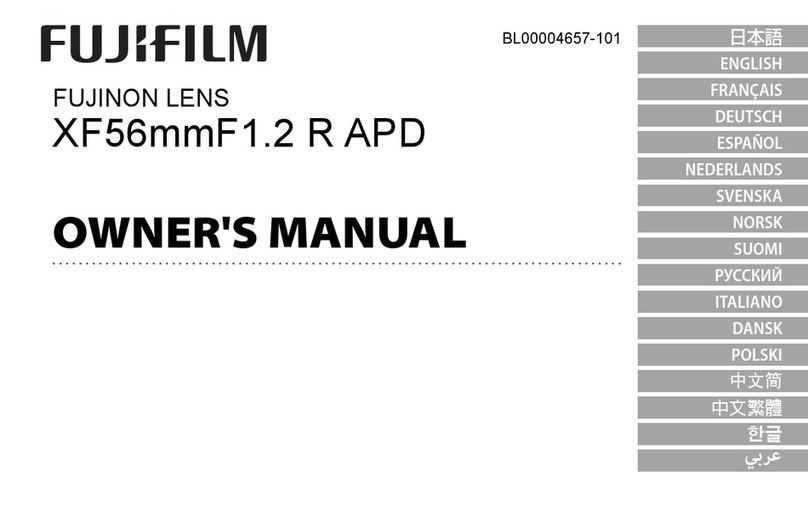PRECAUTIONS
Generally, an ultra-wide lens is susceptible to optical flare and ghost images due to its
ultra-wide angle of view. Check the images carefully through the camera's viewfinder to
make sure there is no adverse flare, glare, or ghost image in the frame.
An ordinary flash device cannot cover the entire angle of view of this lens.Therefore,
unless you are intentionally using a single on-camera flash unit, it is best to photograph in
natural lighting or in extremely broad and flat lighting with multiple lighting units.The
built-in flash unit of a camera may cast a semi-circular shadow of the extending lens barrel
in a photograph.
Refer to the instruction manual of your camera relating to the built-in flash unit.
Set the focusing ring in the AF position when shooting in the AF mode.The ring set at
the MF position in the AF mode may cause damage to the lens and/or camera.
Certain camera models may indicate the maximum and minimum aperture values of
this lens in approximate numbers.This is inherent to the design of the camera and not an
indication of error.
If you use the data-memory card of the Minolta card system, the focal length of this
lens is registered as 15mm. Such a focal length registration is due to the memory system of
the camera and is not an indication of error.
When using the Pentax MZ-10 in the auto-picture-program mode, you may not be
able to set the camera to the "portrait" mode.The camera judges the appropriateness of the
set picture mode gathering data such as the focal length of the lens, the image magnifica-
tion and so on. When determined not appropriate, set picture mode is cancelled
TO ENSURE LONG-TERM SATISFACTION
1.Avoid touching the glass element surface. Use a photographic lens cloth or blower
brush to remove dust from the lens element surface. When not using the lens, always place
the supplied lens cap on it for protection.
2.Use a lens cleaning tissue or lint cloth with a drop of cleaning solution to remove
fingerprints or dirt on the glass lens surface with a rotary motion from the center to edge.
Use a silicon cloth to clean your lens barrel only.
3. Mildew is an enemy of your lens. Clean the lens after shooting near water or in any
humid place. Store your lens in a clean, cool and dry place. If you find mildew on your lens,
consult a repair shop or nearby photographic store immediately.
4.Do not touch the lens-camera interface contacts since dust, dirt and/or stains may
cause contact failure between the lens and camera.
5.When using your equipment [camera(s) and lens(es)] in an environment where the
temperature changes from one extreme to another, make sure to put your equipment tem-
porarily in a case or plastic bag for a period of time to allow the equipment to gradually
adjust to the temperature shift. This will reduce potential equipment trouble.
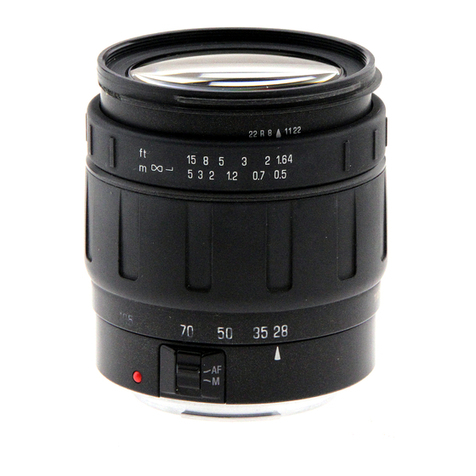
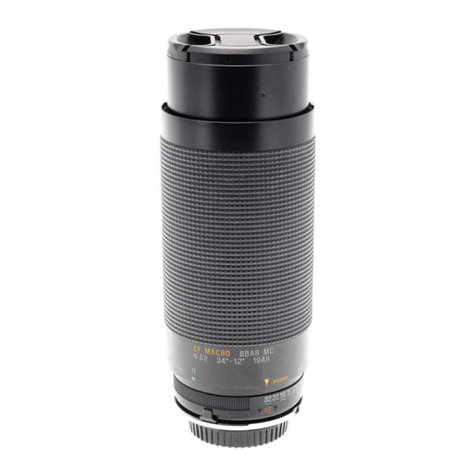


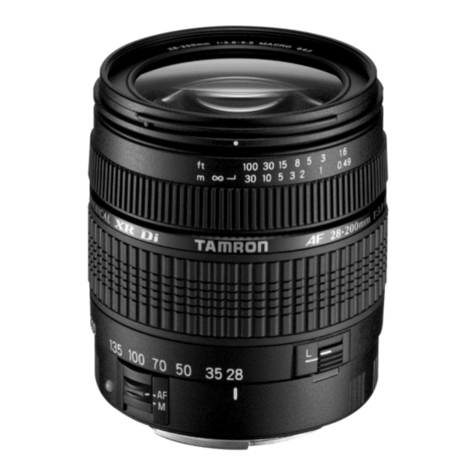

![Tamron SP AF70-200mm F/2.8 Di LD [IF] Macro User manual Tamron SP AF70-200mm F/2.8 Di LD [IF] Macro User manual](/data/manuals/22/5/225xu/sources/tamron-sp-af70-200mm-f-2-8-di-ld-if-macro-camera-lens-manual.jpg)
